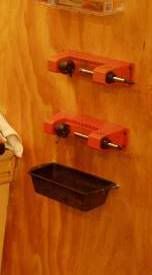Greyhunter
New member
I'm reloading .223 for my AR's and I enjoy most of the process, except case trimming of course. I was just in my war room looking at the 1,000+ cases that need trimmed and its almost depressing. So if you have the time I'd like some education in this department.
I believe max case length for .223 is 1.760" and trim to length is 1.750". I know that years ago I reloaded alot of cases w/o trimming (didnt even own a caliper then) and I have a buddy that said he has never trimmed a .223 case. When I load for accuracy I now trim every case, but I have skipped this when loading cheap FMJ blasting/SHTF ammo.
So what is your proceedure? Do you trim every case or just those over a certain length? And how many firings do you get before you have to trim that case again?
At what point does excessive case length become a problem, and what problem does it create? Can they actually stretch enough not to fit in a 5.56 or Wylde chamber?
How much does varying case length affect accuracy? I loaded some Rem 55gr FMJ's into LC brass w/o trimming and got 2.5"-3" groups. The same rifle and same powder/primer combo (this time trimmed Winchester cases) produced .5" groups on the same day with 60gr Vmax. I dont know whether to attribute that difference to the trimming or the bullets. Those LC cases vary from 1.755" to 1.780" on the upper end.
I've been using the Lee hand trimmer and cordless drill method. I'm wondering if I would find a Gracie type trimmer to be worth the money...
I believe max case length for .223 is 1.760" and trim to length is 1.750". I know that years ago I reloaded alot of cases w/o trimming (didnt even own a caliper then) and I have a buddy that said he has never trimmed a .223 case. When I load for accuracy I now trim every case, but I have skipped this when loading cheap FMJ blasting/SHTF ammo.
So what is your proceedure? Do you trim every case or just those over a certain length? And how many firings do you get before you have to trim that case again?
At what point does excessive case length become a problem, and what problem does it create? Can they actually stretch enough not to fit in a 5.56 or Wylde chamber?
How much does varying case length affect accuracy? I loaded some Rem 55gr FMJ's into LC brass w/o trimming and got 2.5"-3" groups. The same rifle and same powder/primer combo (this time trimmed Winchester cases) produced .5" groups on the same day with 60gr Vmax. I dont know whether to attribute that difference to the trimming or the bullets. Those LC cases vary from 1.755" to 1.780" on the upper end.
I've been using the Lee hand trimmer and cordless drill method. I'm wondering if I would find a Gracie type trimmer to be worth the money...



